These intricate works known as ukiyo-e, hold a secret language, hidden beneath their vibrant colors and delicate lines. Indeed, there is deep symbolism of Japanese Woodblock art by design.
From majestic Mount Fuji to delicate cherry blossoms, nature is portrayed in these prints with deeper meaning behind these powerful symbols. The codes of color, decipher the rich palette adding layers of meaning to the artwork. Beyond landscapes and flowers, the world of geishas and kabuki, portray Japanese traditions and their significance within the prints.
But ukiyo-e is not just about aesthetics; it serves as a powerful vehicle for social commentary. We’ll uncover the subtle messages embedded within the prints, offering a unique glimpse into Japan’s history, culture, and social dynamics.
The Art of Ukiyo-e: An Introduction
The art of ukiyo-e extends far beyond its visual appeal, encompassing a rich tapestry of hidden narratives and cultural significance. These woodblock prints open a captivating world, shedding light on Japan’s history, culture, and social dynamics. The profound storytelling embedded within each print, reveals the hidden meanings behind iconic motifs and the significance of colors and cultural symbols.
To learn more, read our article: What is Ukiyo-e? A Dive into Japanese Woodblock Prints
Nature’s Majesty: Mount Fuji and Cherry Blossoms
Within ukiyo-e prints, the natural world takes on a symbolic and emotive role, reflecting Japan’s deep reverence for nature and its profound influence on the Japanese psyche. Two prominent symbols found repeatedly in these prints are Mount Fuji and cherry blossoms, each carrying its own distinct significance.
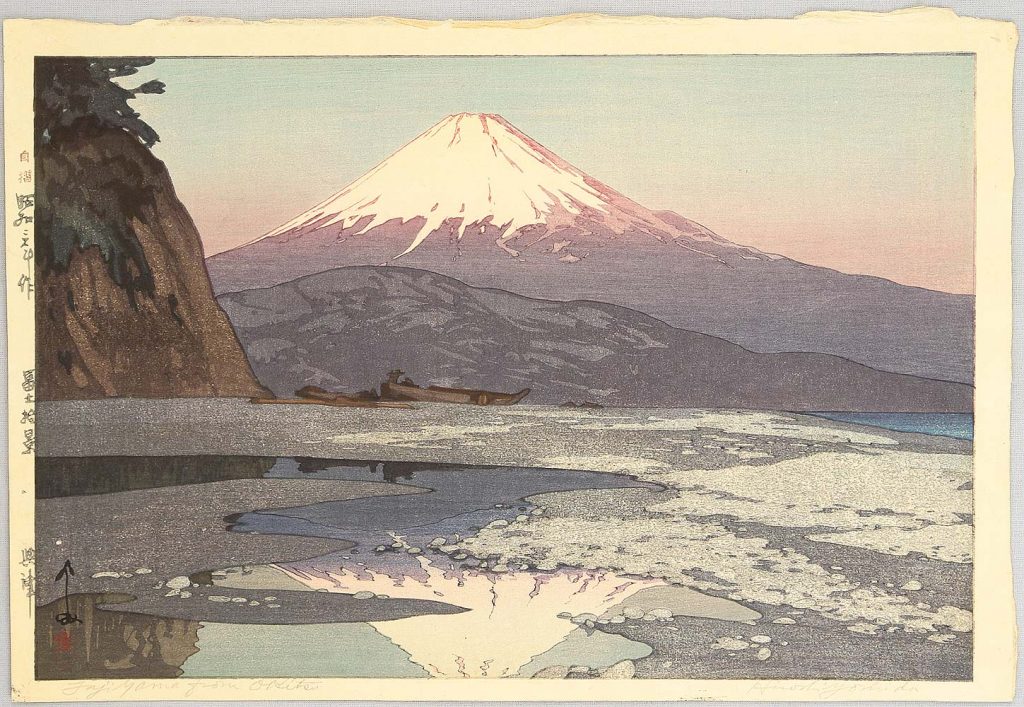
Significance of Mount Fuji
Mount Fuji, with its majestic presence and towering prominence, represents not only a physical landmark but also serves as a symbol of national identity and spiritual inspiration. As the highest peak in Japan, it has long been regarded as a sacred mountain, embodying a sense of transcendence and awe. Its depiction in ukiyo-e prints often signifies a connection to the divine, evoking a sense of wonder and contemplation.
Here are 9 Reasons for the Importance of Mount Fuji in Japanese Culture, and 6 of the Most Prominent Mount Fuji Ukiyo-e Art Prints.
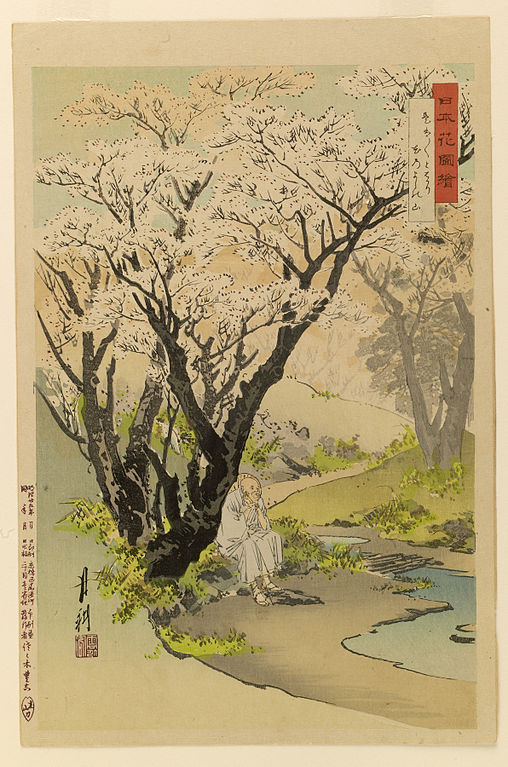
Symbolism of Cherry Blossoms
Similarly, cherry blossoms, known as sakura in Japanese, hold a special place in the hearts of the Japanese people. Cherry blossoms symbolize life’s transience and fleeting joy. The hanami season, when people admire their brief beauty, is highly anticipated. In ukiyo-e prints, they remind us of life’s impermanence and the importance of cherishing the now.
Juxtaposition of Mount Fuji and Cherry Blossoms in Ukiyo-e
Mount Fuji and cherry blossoms often appear together in ukiyo-e prints. This pairing creates a synergy that reflects nature’s beauty and tranquility. It highlights the bond between the symbols, the Japanese landscape, and humanity’s connection to nature. This combination invites viewers into a serene, natural harmony. These symbols offer insights into Japan’s history and the deep relationship between its people and the environment.
The Language of Color in Japanese Woodblock Art
Colors play a pivotal role in Japanese Woodblock art, contributing to the overall message and evoking specific emotions in the viewer. Each hue is carefully selected to convey a particular mood or idea, adding depth and nuance to the visual storytelling of these prints. Just as Mount Fuji and cherry blossoms hold symbolic meaning, so too do the colors employed in ukiyo-e prints.
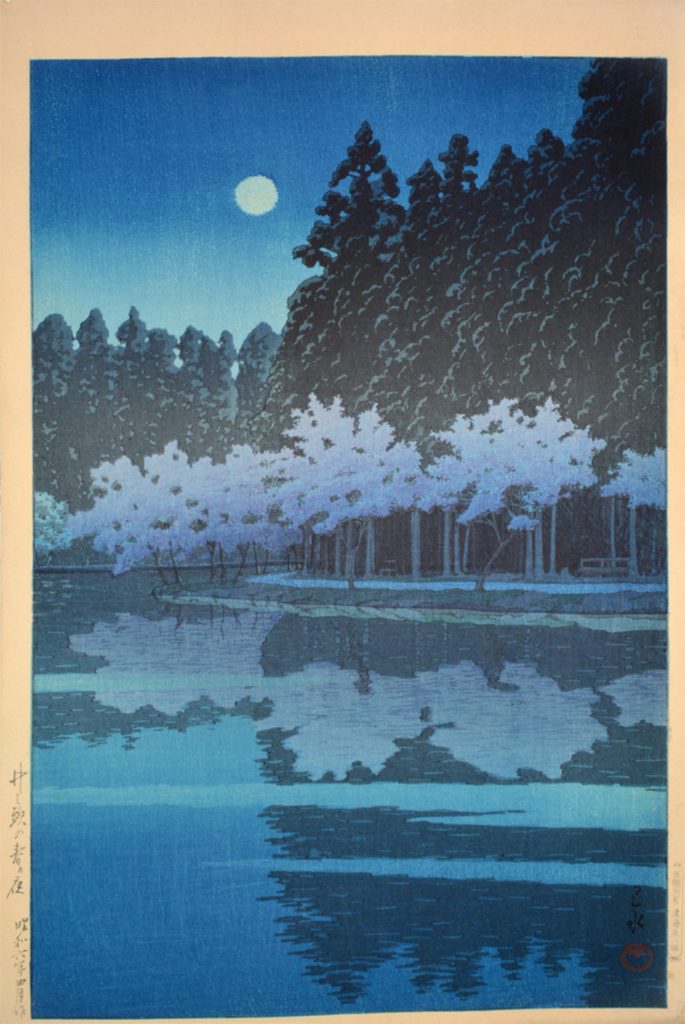
The Tranquility of Blue
One color frequently used in ukiyo-e prints is blue. A shade commonly associated with tranquility, blue imbues a sense of calmness and serenity into the artwork. It represents the vastness of the sky and the depth of the sea, evoking feelings of expansiveness and freedom. In prints featuring Mount Fuji, the use of blue often signifies the ethereal nature of the mountain and its connection to the heavens. It also serves as a visual representation of the harmonious relationship between humans and the natural world, reinforcing the idea of serenity and peace.
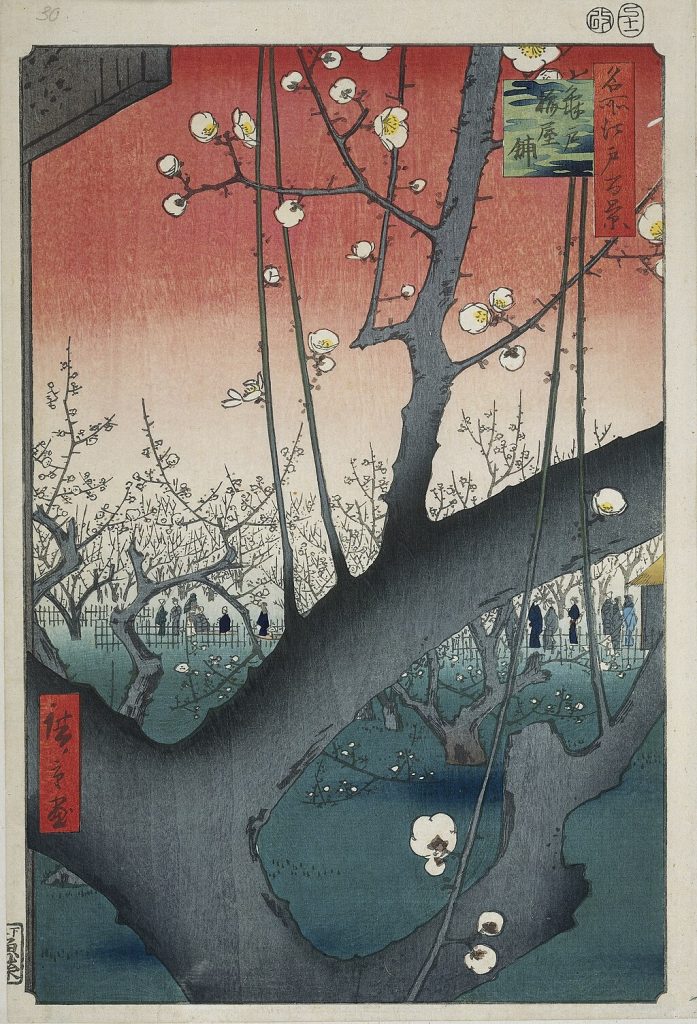
The Vitality of Red
Another color frequently found in ukiyo-e prints is red. Symbolizing vitality, passion, and energy, red commands attention and adds a dynamic element to the artwork. In prints featuring cherry blossoms, red is often used to represent the vibrant and fleeting nature of these delicate flowers. It underscores the transient beauty and ephemeral nature of life, reminding viewers to savor the present moment. Red can also be seen in other elements of the prints, such as clothing or architectural details, further enhancing the narrative and evoking the desired emotional response from the viewer.
The Majesty of Yellow
Yellow, another significant color in ukiyo-e prints, conveys a sense of joy, prosperity, and nobility. It is often utilized to depict the warmth of sunlight or the majesty of gold. In prints featuring landscapes or bustling city scenes, the use of yellow may signify the vibrancy and thriving nature of urban life during the Edo period. It captures the essence of prosperity and opulence, providing a glimpse into the cultural and economic context of the time.
The selection and placement of hues in ukiyo-e prints enrich the visual experience. They add cultural significance. Blue brings tranquility, red vitality, and yellow joy. This symbolic palette invites us to appreciate Japanese art’s profound beauty and complexity.
Tradition in Motion: Geisha and Kabuki
Geisha and kabuki performances hold a special place in ukiyo-e as they capture the essence of Japanese traditions in motion.
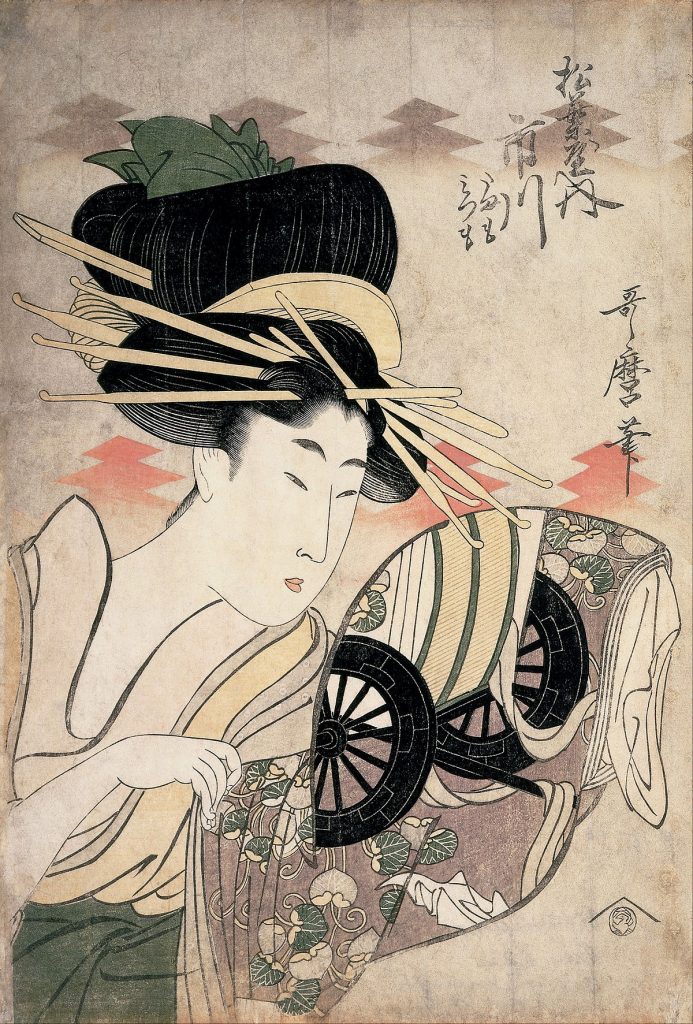
The Art of Geishas
Geishas, with their graceful demeanor and traditional attire, have long been associated with the elegance and refinement of Japanese culture. Ukiyo-e prints often show geishas in activities like playing instruments, dancing, or chatting with patrons. Artists capture the delicate details of their attire, highlighting the artistry of these prints.
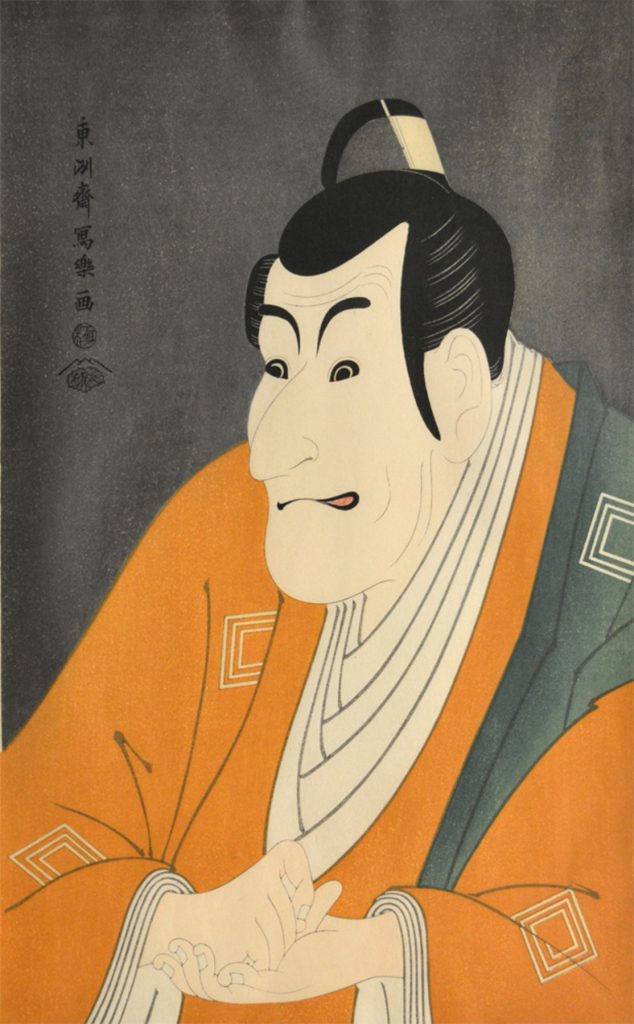
Kabuki in Ukiyo-e
Kabuki theater, with its vibrant costumes, exaggerated gestures, and dramatic storytelling, is a cherished Japanese cultural aspect depicted in ukiyo-e prints. The highly stylized characters and vibrant scenes of kabuki performances come to life through the intricate woodblock techniques. These prints not only showcase the visually stunning aspects of kabuki, but also provide a glimpse into the dynamic narratives and emotional intensity of the performances.
Homage to the Traditions of Japan
With geisha and kabuki prints, the ukiyo-e artists not only showcase their technical prowess but also pay homage to the enduring traditions of Japan. These prints serve as cultural artifacts, preserving and perpetuating the stories and customs that have shaped Japanese society. By studying these visual representations of geisha and kabuki, we gain a greater understanding of the significance and impact of these age-old traditions.
Another element that appears frequently in Japanese Woodblock art are Samurai. Read more about Samurai in Ukiyo-e and Japanese Art: Guardians of Tradition, Icons of Eternity. Geisha, Kabuki, Priests, Samurai have all contributed heavily to the symbolism of Japanese Woodblock art.
Social Commentary: The Subtle Messages in Japanese Woodblock Prints
Ukiyo-e artists were not simply concerned with depicting the beauty and elegance of geisha and kabuki actors. Their prints also served as a medium for commenting on the society and the world around them. By examining the subtleties within these prints, we gain insights into the issues and concerns prevailing during that era.
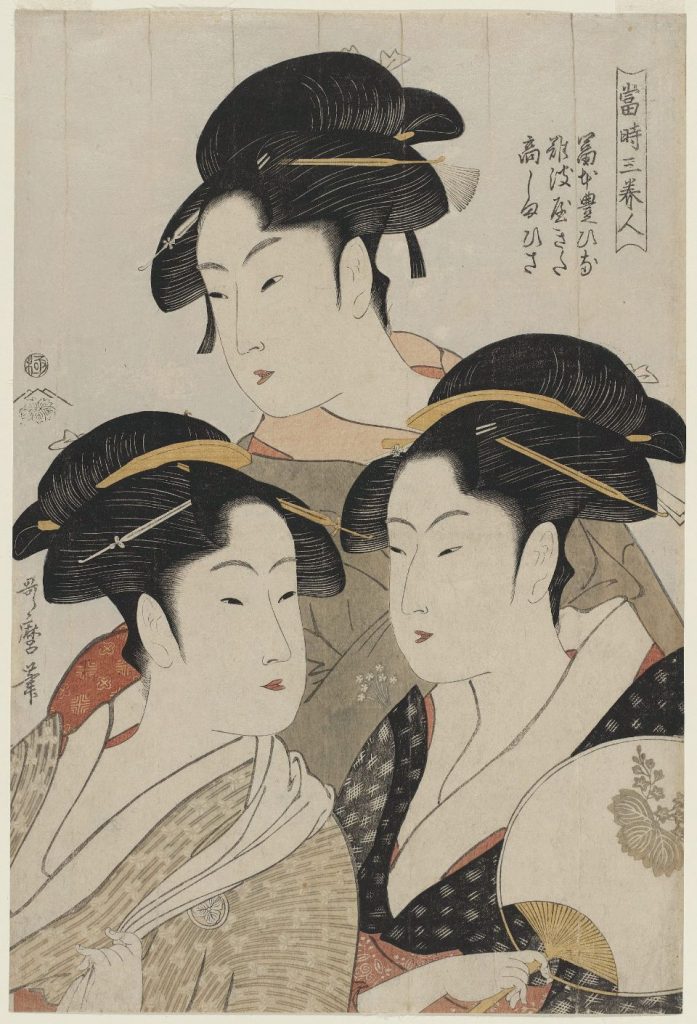
Fleeting Nature of Beauty and Fame
One prevalent theme found in ukiyo-e prints is the fleeting nature of beauty and fame. Through the portrayals of geisha, artists captured the transitory nature of their existence. These prints illustrate the delicate balance between sophistication and vulnerability, reminding viewers of the ephemeral nature of youth and beauty. This subtext highlights a society obsessed with appearance and fleeting time, where fame can vanish as quickly as spring’s cherry blossoms.
Commentary of Socio-political Issues
Beyond the portrayal of geisha, ukiyo-e prints also provided commentary on socio-political issues of the time. For instance, prints from the Edo period often depicted kabuki actors in roles that subtly reflected the prevailing political climate. By highlighting specific characters or scenes, artists managed to convey their opinions without directly criticizing those in power. These prints served as a discreet form of protest or a means of expressing dissent within the confines of artistic expression.
Furthermore, ukiyo-e prints also provided social commentary on the status and roles of women in Japanese society. Geishas were admired for their beauty and talent but faced a rigid social structure limiting their autonomy. Prints show their complex relationships with patrons, highlighting the power dynamics and societal expectations on women. These depictions reveal the challenges women faced in a patriarchal society, prompting reflection on gender roles and norms.
Conclusion: The Symbolism of Japanese Woodblock Art
Japanese woodblock art offers a visual feast, from nature symbols like Mount Fuji and cherry blossoms to the meanings of its colors. It portrays traditions through geisha and kabuki, rich in cultural symbols and storytelling. All of the elements discussed above contribute to the deep symbolism of Japanese Woodblock art.
Read more:
- Collecting Ukiyo-e Art: A Guide for Beginners
- 11 Most Influential Ukiyo-e Artists: Masters of Japanese Woodblock Prints
- From Japan to the World: The Global Influence of Ukiyo-e Art
- The 12 Most Important Ukiyo-e Artworks of All Time
- Foo Dogs in Japanese Art and Culture
- Evolution of Japanese Woodblock Art: Ukiyo-e, Shin-Hanga, and Sosaku-Hanga
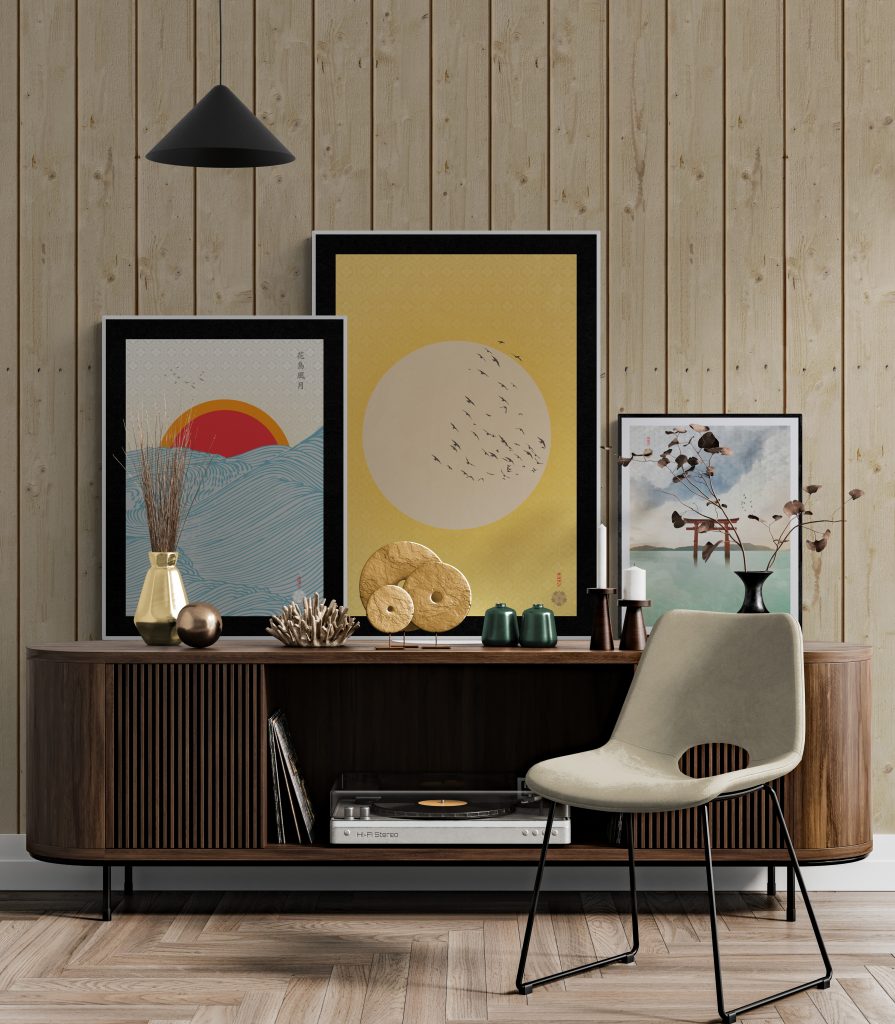
At the Art of Zen we have a wide selection of original Japanese art prints in the ukiyo-e and Japandi style. Some of our best selling work is Mount Fuji wall art and Japandi wall art.
Add some zen to your space with brilliant original art from the Art of Zen shop.
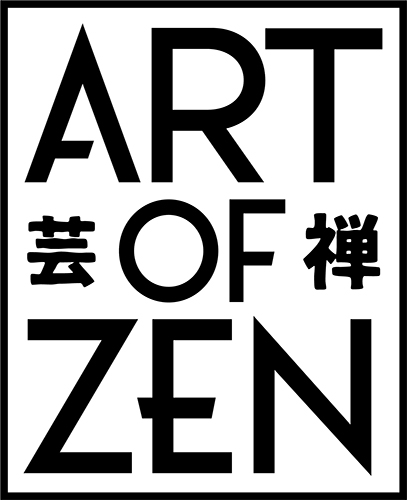
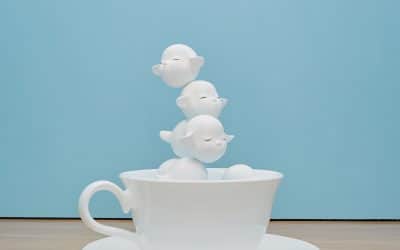
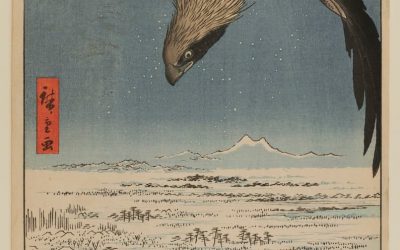
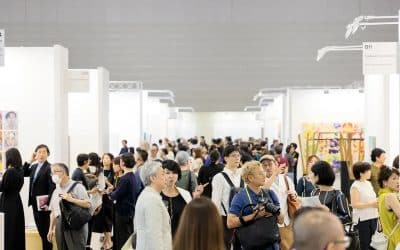
0 Comments